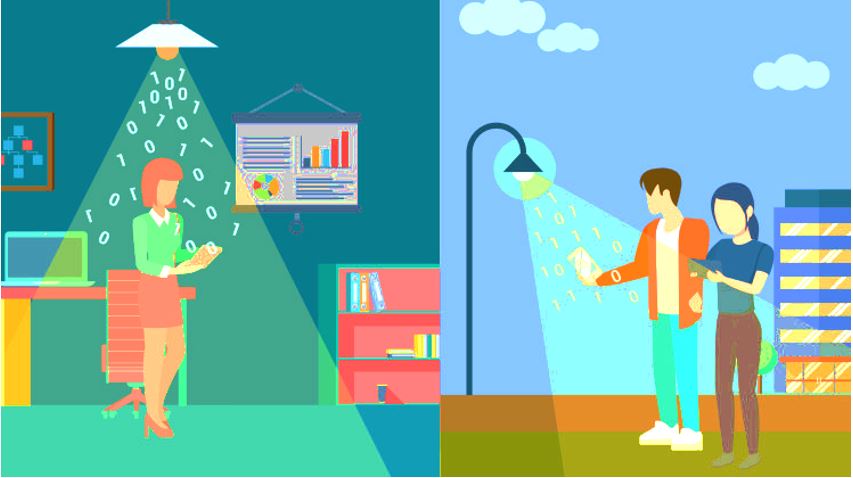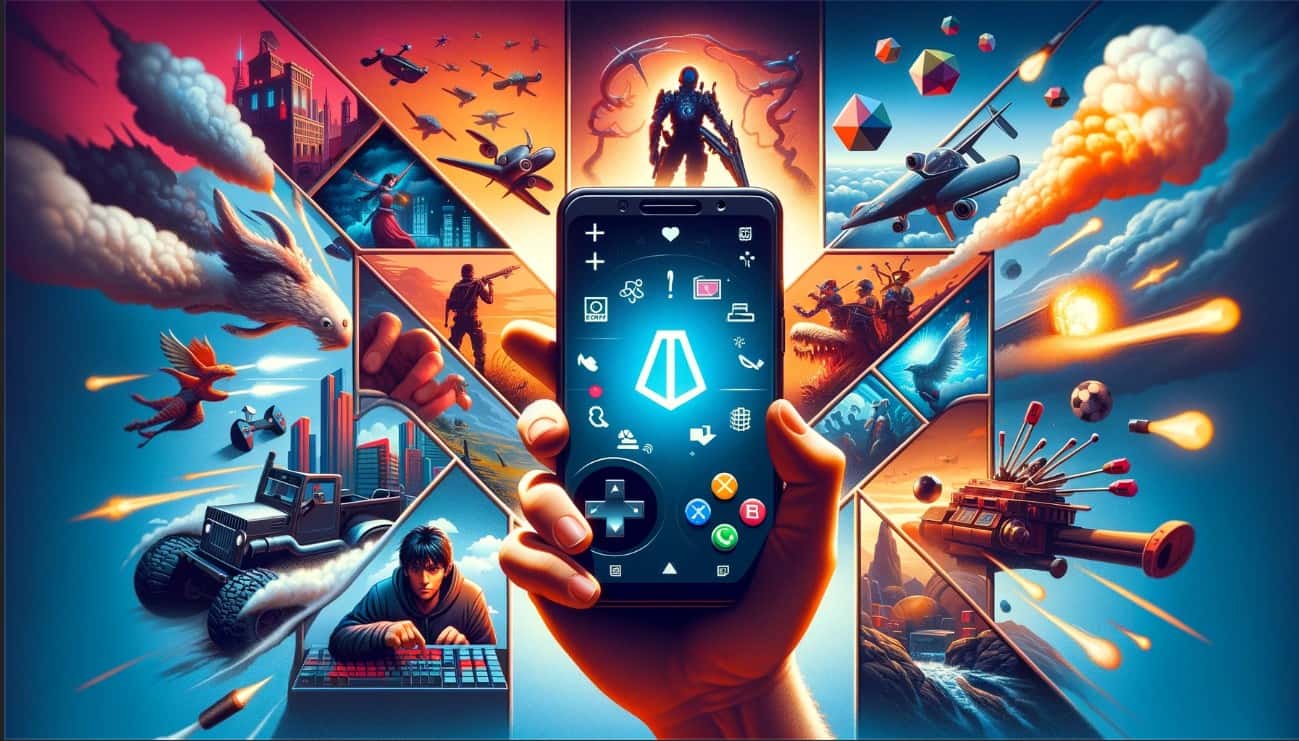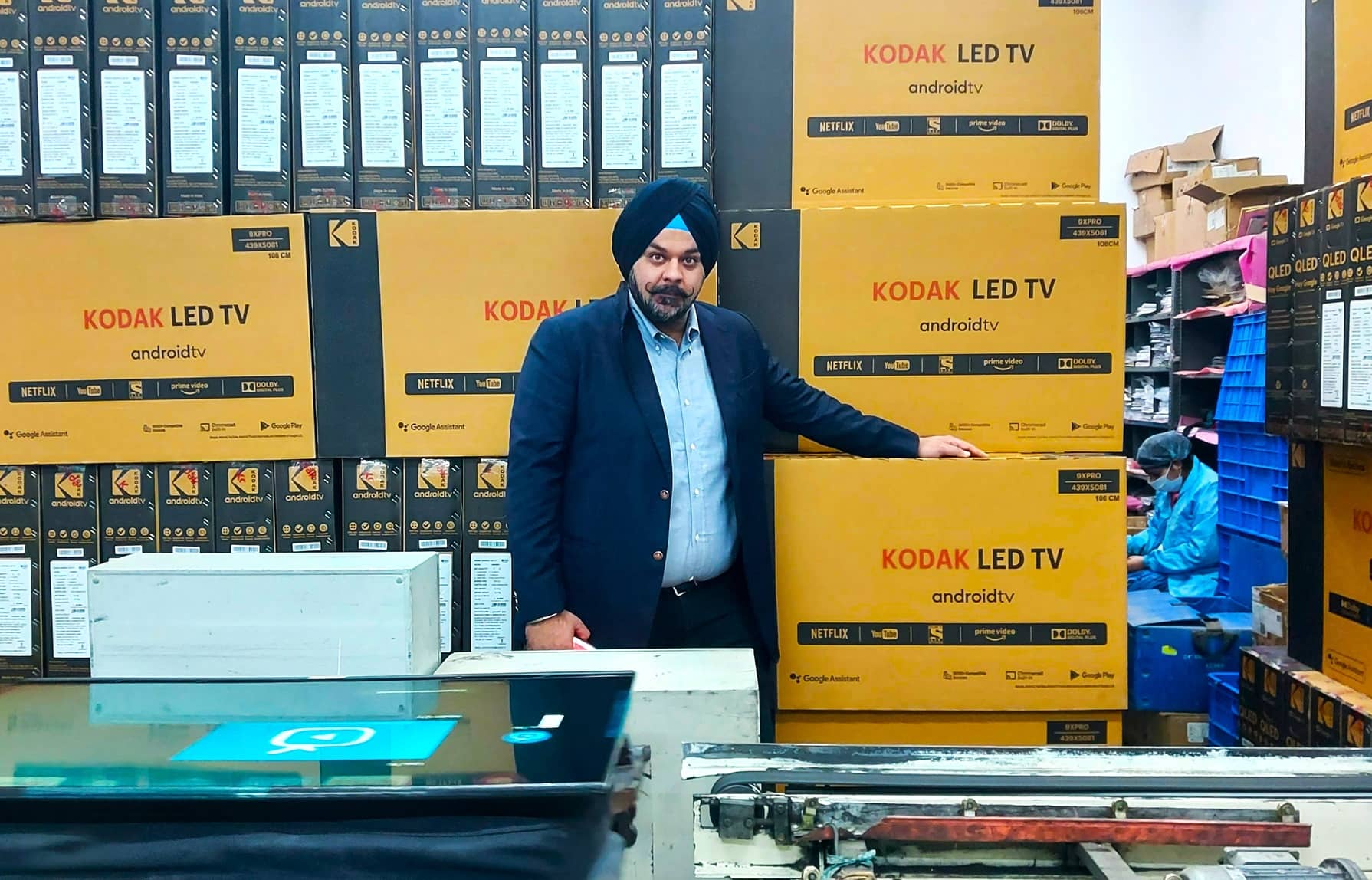Let me demystify the concept of Li-Fi. I will also discuss, why Li-Fi is going to be the future, and the reasons, why it is better than Wi-Fi for wireless communication and what is the difference between LiFi and WiFi?
Even though optical fibers, which are based on light is the bedrock of modern telecommunication and internet services, we typically use Wi-Fi or Ethernet in homes and offices to connect our computers, laptops or mobile devices. Though radio frequencies for Wi-Fi and electrical signals for Ethernet cables can effortlessly handle our data transactions in homes and offices, our internet service providers or ISPs use optical fibers, not to mention, the tier one ISPs also use the same for handling data transmission in bulk. The key reason behind using optical fibers is the speed of light and the high frequency of visible light to fit more data into the spectrum.
Just imagine, how magnificent will it be, if you can use visible light to transmit signals between your laptop or other devices and router, or simply be able to send and receive signals between multiple devices through visible light. I am not talking about sci-fi movies presenting the impossible. It is real, and in the coming days, your living room LED or the lights in your office can act as routers to make high-speed data transfer a reality, ditching radio signals, which are susceptible to interference, or wires, which create a lot of mess, in the first place. I am talking about Li-Fi technology, which is the acronym of Light Fidelity. Just relate it to Wi-Fi or Wireless Fidelity.

What is Li-Fi and how will it work?
Li-Fi is a communication method, which implements Visible Light Communication or VLC, where signals can be transmitted through visible light, and a photo-detector can be used to interpret the signals in real-time.
Signals will be transmitted by controlling the brightness of the light typically LEDs, which can be turned on or off extremely fast, and this will be accomplished using an optical drive, which will be used to control the power delivered to the light, to turn off, dim or brighten it, as per the signals that are sent to it.
The photo-detector at the client or the device end should be capable enough to detect those very small changes, which can eventually be helpful to receive the data sent through visible light. The switching of the LEDs will be too fast for human eyes to comprehend, and thus, flickering LED lightings aren’t going to affect the luminosity of your room or office.
Why Li-Fi is going to better than Wi-Fi?
Necessity is the mother of invention, and we sophisticate things not only for our convenience but also to deal with the new challenges that come the way. In the same way, Li-Fi can be used to deal efficiently with the modern challenges of wireless data transmission.
Let’s find out a few benefits of using LiFi over Wi-Fi.
More bandwidth means better speeds
The future belongs to IoT, and we will connect almost every device we can think of, to the internet, which will require more bandwidth. While modern routers can easily get overwhelmed connecting too many devices due to the very short spectrum of radio waves, visible light has a way wider spectrum to accommodate more data.
While the frequency of radio waves lie between 3 KHz and 300 GHz, visible light frequency ranges between 430 and 770 THz, making the spectrum of visible light almost 1,000 times wider than that of radio waves. Li-Fi can handle a magnificent speed of 224 Gigabits per second, and speed of 100 Gigabits per second has been achieved in under testing environments. Though you cannot download a file at such satisfying speeds, as most ISPs will not offer you such speeds at this time, and hardly any web server will offer downloads at such high speed to individual users. But the speed is achievable, which can bring new possibilities, to say the least.
Low cost of setting up infrastructure
Wi-Fi works by sending and receiving radio waves that are transmitted by the devices through the air. You need special devices to be able to send and receive radio signals, and we use our Wi-Fi routers for that purpose. There is no rocket science in it. But think about light. It is everywhere we can look at. We have lights on our desks, rooms and those light sources can be used to transmit optical signals by just adding an optical drive to it.
So we can use our everyday use light sources to transmit signals without the need of investing extra on a completely new infrastructure for communication purposes. So just get a LED bulb and you are ready to access the internet wirelessly.
No hazards of radiation
Health hazards related to radio waves is always a hot potato, but it can interfere with some sensitive instruments to make them malfunction, which isn’t something most people want. Though there might not be any proven health risks, radio waves are prohibited in different places for safety reasons. But there will no such issues with Li-Fi as light is everywhere. Where there is light, there is Li-Fi and hence internet access. No hazards of radiation caused by radio waves.
Light waves are not susceptible to interference, which means, you can Li-Fi as a source of very fast internet connection or data source with hardly any interference or other factors that might reduce the speed and convenience of the data source in any way.
Better management of data density
Radio waves travel in all the directions from the source, no matter where the receiver of that data is located within the range. That is undoubtedly cool, as you can be connected to a Wi-Fi connection freely, as long as you are within the range, but it causes a lot of waste if you are sitting at one place accessing the internet. Though the problem can be mitigated to some extent by using new technologies like beamforming, that still isn’t perfect.
Just think of visible light. We can concentrate it at one point, and stop scattering almost completely by blocking the transmission of light way more easily using physical obstacles. With light concentrated at one single point, we can not only reduce energy waste but can also get the best out of the complete beam of light that we can get from the source. Some special actuators can also be used to move or rotate the source of light if the user is moving in different directions.
Better security
If you are quite concerned about privacy, you might be afraid to use the Wi-Fi as the signals can easily be intercepted using some special tools if a guy with bad intentions is within the range of your Wi-Fi coverage. The reason is simple. Radio waves can travel through walls and different other obstacles, which undoubtedly helps us get a better range, but our security is also at stake.
Well, light waves are not that competent. They cannot travel through walls unless you are living in a magnificent building with glass walls around you. Sometimes less is more, and that applies for Li-Fi. It is impossible for others to eavesdrop into your network and intercept the signals unless the attacker is within the same room, where you are present. The likeness of that is almost next to impossible. This a significant improvement over Wi-Fi, when it comes to privacy.
So those were the ways, how Li-Fi is better than Wi-Fi or is at least going to be.
The limitations or challenges of LiFi technology
But every good technology comes with its own limitations. Though less, Li-Fi isn’t an exception to that, as well. Let’s find a few limitations of Li-Fi.
The first limitation is undoubtedly the range of a Li-Fi network. Li-Fi signals can’t travel from one room to another, which is a big limitation. But syncing the light bulbs used as data sources in different rooms can be a solution to this problem, needless to say, the problem can’t be eradicated by making light travel through walls or other opaque obstacles.
Light pollution is a serious issue nowadays, and that can be a hurdle for Li-Fi if it is used in public places or any other places, where there are multiple light sources that can confuse the photodetector, which can eventually cause data losses or complete disconnection in the worst cases.
Different applications of Li-Fi
The technology can be used in a number of other ways apart from only accessing the internet using an LED light bulb as a source of signal for accessing the internet. Let’s find out a few implementations of Li-fi.
Data transmission between devices
Apart from receiving data from a light source, Li-Fi can also be used to send data between two devices within a short range but with extremely high speed.
Cheap internet access to the public using street lights
Street lights are nothing new. With Li-Fi, the street lights can be used as a source of accessing the internet, which can be useful to offer free public internet connectivity at a very low cost, as the basic infrastructure is already there.
Use in mines and other hazardous environments
Radio signals aren’t suitable for hazardous environments like mines. As Li-Fi will use visible light, it can even be used to offer internet access within mines and other similar hazardous environments, where radio waves can cause damage.
Easy internet access in flights
The light above every passenger’s seat in an aircraft can be used as a source of high-speed internet to serve the passenger sitting just below it. Though Wi-Fi or other radio waves don’t necessarily interfere with the signals from the air traffic control, with visible light being the medium of offering internet access, no question of interference will arise, and there will be no scopes for any complaints.
Communication between self-driving cars
All cars nowadays come with LED lights at the back, side, and front. Self-driving cars also are no exception to that. The LED lights can enable cars to communicate with other cars in the vicinity and help them make decisions or avoid collisions and accidents, making them smarter and more reliable.
Some more worth knowing points
Wi-Fi can be used to access the internet even at night without disturbing others who are sleeping, as radio waves are invisible. Even though lithe light is visible, you can use Li-Fi to access the internet without disturbing other family members who are sleeping in the same room. But how! The power of the light can be reduced to very low intensity, and that will hardly cause any change in the way you access the internet, without disturbing others. If you use a night lamp, it can also be used as a source of signal for Li-Fi.
Unlike Wi-Fi, the brightness or intensity of the light can also be controlled depending upon the number of users connected to the network, or the actual usage or bandwidth usage of the source. This can save electricity, which will have a massive environmental impact for good.
Harald Haas explained the concept of Li-Fi in a TED Talk episode in 2011, and it has come a long way since then. As no additional infrastructure is necessary to implement this technology, we can expect the dream of Li-Fi come true in the coming years. When there are a number of challenges of implementing 5G technology for the requirement of some new infrastructure, the introduction of Li-Fi among consumers can be a big breakthrough to offer very high-speed internet at least in homes, if not while moving or roaming within a geographical area.
We have long been using light to transmit data, apart from using optical fibers. Li-Fi is going to add a new feather to the cap.
Hope the information was useful for you. Do you have anything to say? Feel free to comment the same down below.
Other Resources:
- What is Powerline Ethernet Adapters? How do they work?
- Project Mainline to address the problem with delay security updates on Android devices.
- Oracle database system: Everything you need to know about it…
- Why hard drives and USB drives have less storage space than advertised?
- What is Cloud gaming? Everything about streaming games that you should know






word